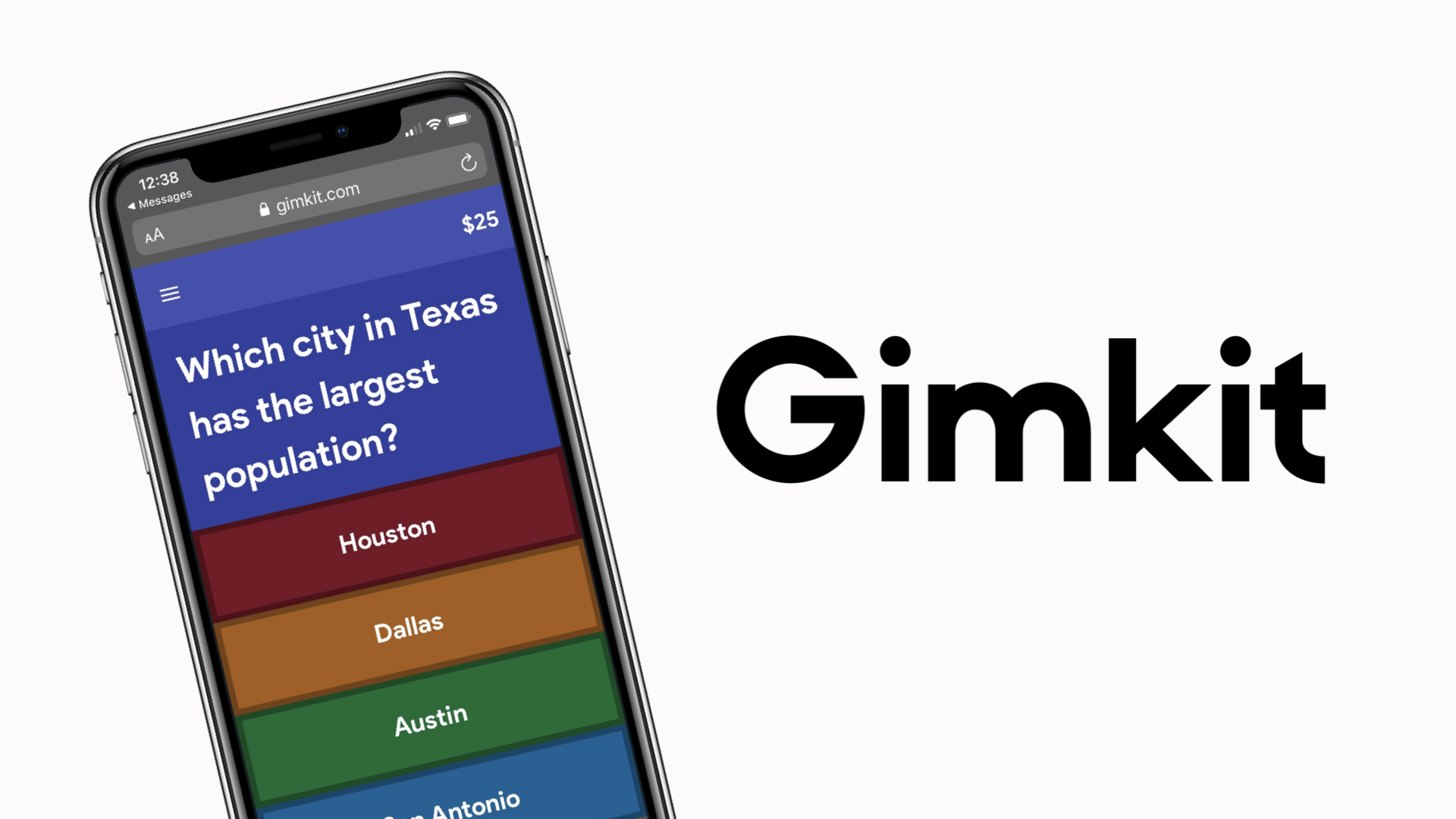Gimkit Lesson Plan
This Gimkit lesson plan is designed to help educators implement the digital tool into their instruction

Gimkit is an exciting game-based online platform that can be used in different ways for students of all ages to reinforce their content knowledge and learning.
For an overview of Gimkit and some of its features, check out our Gimkit: How to Use it for Teaching.
Here is a sample Gimkit lesson plan that is focused on using Gimkit to enhance a social studies or history lesson at the middle or high school levels. However, Gimkit can be incorporated into elementary level lessons and other academic subjects too.
Subject: Social Studies/History
Topic: Historical events, places, and people
Learning Objectives:
At the end of the lesson, students will be able to:
Tools and ideas to transform education. Sign up below.
- Respond to questions based on the lesson
- Develop questions to test knowledge of learning
Gimkit Lesson Plan: Starter
To begin the lesson, provide students with content related to the historical events, places, and/or people you are focusing on for the unit. For example, a middle school lesson may be focused on the American Revolution whereas high school students may focus on World World II, taking a deep dive into the countries and people connected to it.
To provide live instruction to students on the content, it may be helpful to use slides through a tool such as Slido or Canva. Or for asynchronous consumption of the content, VoiceThread or WeVideo could be used to provide instruction to students.
Regardless of the edtech tool used to present the content, focus on the areas that students need to know in order to meet the learning objectives.
Guided Practice and Question Development
After students have been taught the content related to the historical events, places, and and/or people, provide a formative assessment check-in by engaging in a few rounds of a question-and-answer game using Gimkit. Not only will you be able to see how students are retaining the content, the types of questions being asked of students can serve as examples for students to create their own questions.
Once you are finished with a few rounds of Gimkit games, have students work on creating questions to contribute to a shared class Gimkit game set. Students can work individually on the questions, developing 3-5 questions each, adding the answers as well. This is another opportunity for students to go back into the lesson’s content as they come up with the questions.
Competition
Using the collective question set created by the students, have a friendly competition using Gimkit. Be sure to go through the questions first to make sure that at least one question from each student is asked, and that the answer is correct.
The “KitCollab” option within the Gimkit platform allows questions to be added by students during the live game. Don’t worry, the questions will not automatically appear as the teacher will still need to approve any in real-time.
Prior to the start of the competition, decide if you will set up the game based on creating a question set from the students’ submissions or if you want to allow questions in real-time.
How can Gimkit be Used for Teamwork?
Gimkit provides a great opportunity to incorporate team learning into the lesson. For the competition, you may want to split students in teams to build collaboration and class spirit. Teams also means that you will not need to have the paid version of Gimkit, as the free version does limit the number of players at a time.
Can Gimkit be Used at Home?
Absolutely! In fact, Gimkit would be a fun alternative to traditional homework assignments. In addition, Gimkit may be a great way to involve families in the lesson, as families can work together to develop questions for a game and play against one another.
So much learning can happen through the use of edtech tools such as Gimkit. In fact, the founder of Gimkit created it as part of a high school project. Try out Gimkit with your students and see what they can develop as a result. I am sure that your students would be interested in a lesson that involves gaming!
Dr. Stephanie Smith Budhai is faculty member in the College of Education and Human Development at the University of Delaware, focusing on Educational Technology, Learning Design, and Justice-centered Pedagogies. She holds two national education technology leadership positions on the Information Technology Council and as Chair of the Culture and Climate Committee for the Society for Information Technology and Teacher Education (SITE). She holds a Ph.D. in Learning Technologies, and a M.S. in Information with a specialization in Library and Information Science, and K-12 teaching certifications in Technology Education, Instructional Technology and Business, Computers, Information Technology, Special Education and Elementary Education. Dr. Smith Budhai is the 2021 SITE Emerging Leader and the 2017 ISTE Awardee for Excellence in Teacher Education. She is also a Nearpod, and VoiceThread Certified Educator. Dr. Smith Budhai has more than a decade of online teaching experience, and has published myriad books (two have been translated into Arabic), articles, and invited editorials surrounding the use of technology and online learning in education. A few of her book publications include:
- Critical AI in K-12 Classrooms: A Practical Guide for Cultivating Justice and Joy
- Best Practices in Engaging Online Learners through Active and Experiential Learning Strategies
- Leveraging Digital Tools to Assess Student Learning
- Nurturing Young Innovators: Cultivating Creativity in the Classroom, Home and Community
- Increasing Engagement in Online Learning: Quick Reference Guide
